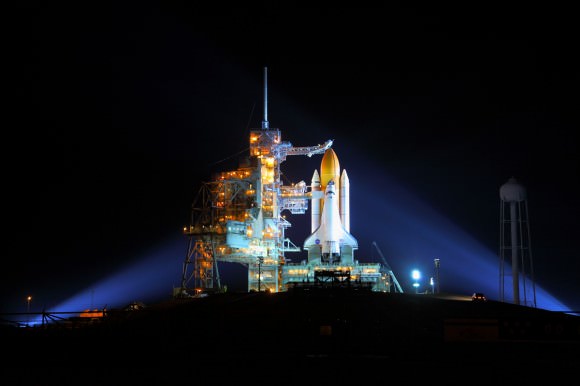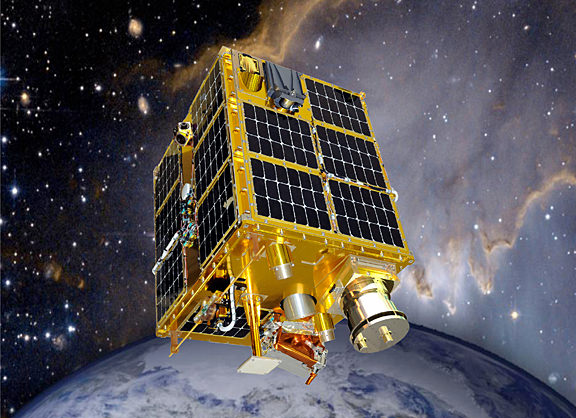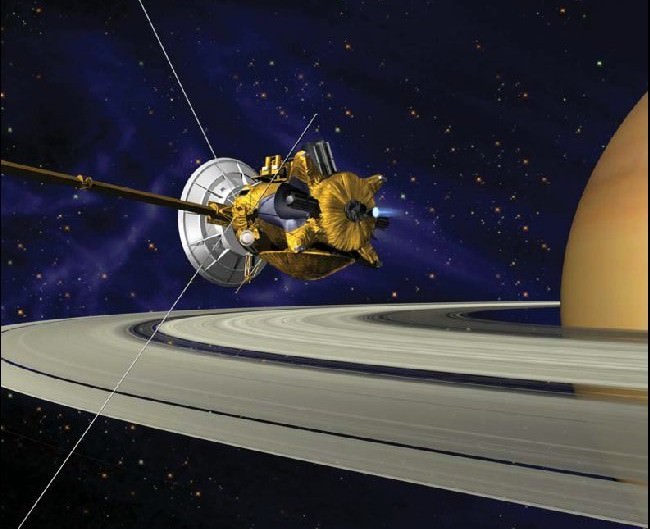The Expedition 25 crew landed safely in Kazakhstan at 11:46 p.m. EST Thursday (Friday 10:46 a.m. Kazakhstan time). The trio — Doug Wheelock, Shannon Walker and Soyuz Commander Fyodor Yurchikhin — undocked in the Soyuz TMA-19 at 8:23 p.m. ending their 5-1/2 month stay at the International Space Station. Staying behind on the orbiting laboratory are Expedition 26 Commander Scott Kelly and Flight Engineers Alexander Kaleri and Oleg Skripochka.
Continue reading “Soyuz and 3 ISS Crewmembers Return Home”
The Fall and Rise of ‘X’
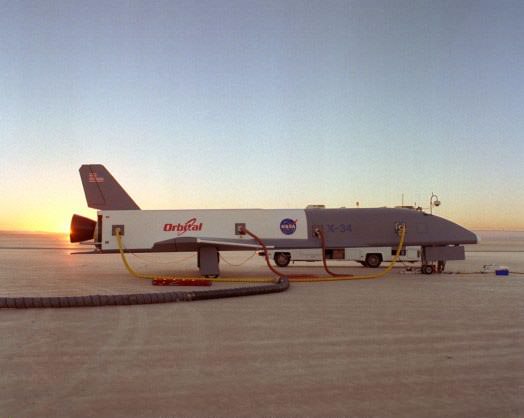
[/caption]
They are at the very edge of current U.S. technological capabilities; one is a supposedly mothballed technology test-bed, the other a super-secret space plane that is currently on orbit – but set to land soon. They are the X-planes, experimental spacecraft that are proving out concepts and capabilities whose beginnings can be traced to the dawn of the space age.
It would appear from amateur observers on the ground that the secretive U.S. Air Force X-37B space plane – will be landing soon. This prediction is based off the fact that the craft is dropping in altitude and the more basic fact that it is nearing the limit of its orbital capabilities and has to return to terra firma. According to the U.S. Air Force, the X-37B can remain on orbit for around nine months or 270 days at maximum, this means that the craft should be landing sometime in the middle of January.
The X-37B or Orbital Test Vehicle (OTV) lifted off from Cape Canaveral Air Force Station in Florida on Apr. 22, atop an Atlas V rocket. Not much is known after launch due to a media blackout imposed by the U.S. Air Force.
The Air Force remains mum about the details surrounding the landing and recovery of the X-37B. It is known that the spacecraft will land at Vandenberg Air Force Base in California.
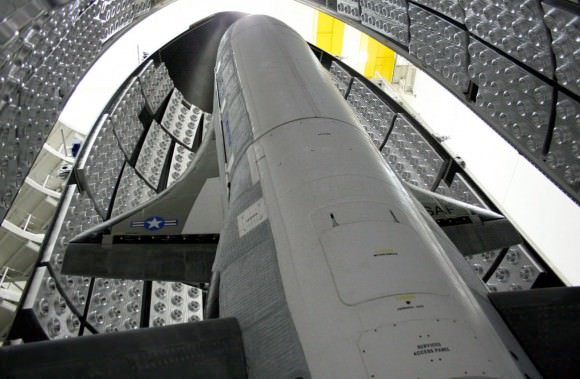
In many ways the craft resembles the shuttle with stubby wings, landing gear and a powerful engine that allows the craft to alter its orbit (much to the dismay of many observers on the ground). When the X-37B does touch down, it will do so at a 15,000 foot-long runway that was originally built to support the shuttle program.
The X-37B is one-quarter the size of the space shuttle. It is about 30 feet long and roughly 10 feet tall, with a 15-foot wingspan. It has a payload bay much like its larger, manned cousin – but naturally whatever that payload was for this mission – it was classified. The space plane was constructed by the Boeing Phantom Works. It is operated out of Schriever Air Force Base, Colorado. Another launch of the craft may take place as early as this March.
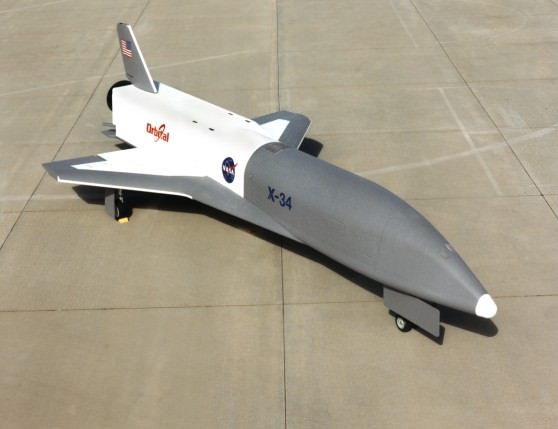
Meanwhile, as the X-37B is ready to head to the hangar, another X-craft appears to be given a new lease on life. Two of the X-34 spacecraft, built by Orbital Sciences Corporation (Orbital), were moved from their hangars at Dryden Flight Research Center to the National Test Pilot School located in the Mojave Desert in California. These technology test-bed demonstrator craft will be inspected by the NASA contractor with the idea of flying them once again.
The roughly 60 foot-long spacecraft were put into mothballs back in 2001. If their flight status is renewed they would add to the growing fleet of robotic spacecraft that the United States appears to be building.
The ‘X’ craft have a long and storied history in American aviation and space exploration. One of the most famous of the “X’ planes – was the legendary X-15. None other than the first man to walk on the moon, Neil Armstrong, flew in this program which tested out concepts that would be later employed in the space shuttle. As the X-37B prepares to end its first mission and the X-34 may be at the verge of a rebirth – could we be at the dawn of a new ‘X’-era? Only time will tell.
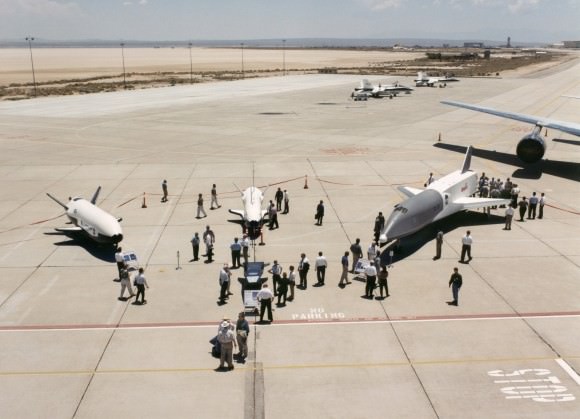
Shuttle Launch Could Be Delayed Into Next Year
[/caption]
While NASA managers have targeted space shuttle Discovery’s launch for no earlier than Dec. 17, they also said they don’t want to rush to any conclusions on the cracks found on the shuttle’s external tank. Therefore, shuttle program manager John Shannon said that if the team doesn’t completely understand the issues, they won’t launch until they do. That might mean mid-December, or it might mean they wait for the next launch window, which is in February of 2011 — or even later.
“It’s a complex problem,” said Shannon. “We really need to understand our risk. Clearly we’re not ready for the December 3 -7 window that’s coming up.”
“We are methodically looking at the data and we’ll let data the drive where we’re heading, drive when we launch,” said Bill Gerstenmaier, NASA’s Associate Administrator for Space Operations, speaking at a press briefing on Wednesday.
Engineering evaluations are ongoing of the four cracks on found on two 21-foot-long, U-shaped aluminum brackets called stringers on the shuttle’s external tank, and Shannon said they still need more analysis until they understand everything. The only previous time cracks like this have been seen are during the assembly process, or if the tank has been mishandled during assembly – cracks like this have never been seen at the launchpad before.
“We have worked hard to understand the exposure, and we want to understand everything,” Shannon said. “We’re looking at the fault tree from assembly, to how it gets foamed, to transport, to how it gets to KSC – every single part of that tank’s life is part of our fault tree analysis.”
It appears the biggest worry is not that the tank would fall apart during the stresses of launch, but that foam would be dislodged from the tank, which could impact the shuttle during launch. Foam from the ET is what damaged space shuttle Columbia, and caused it to disintegrate during reentry in 2003, killing all seven astronauts on board.
If the teams feel their analysis is complete and they have the flight rationale to fly, the earliest launch date would be Friday, Dec. 17 at 8:51:53 pm EST.
A Soyuz is scheduled to dock at the space station at 3 pm EST that day, carrying three new crew members to the ISS.
No launch dates are available in January 2011 because of constraints with the orbit of the space station and conflicts with other unmanned cargo launches. The launch window in February opens on the 27th and closes March 6. Another window, Feb. 3 -10 could be available if the Japanese cargo ship, scheduled to arrive in late January, can be moved to another port on the space station.
We’ll keep you posted.
Delta IV Heavy Roars Off Launch Pad on Secret NRO Mission
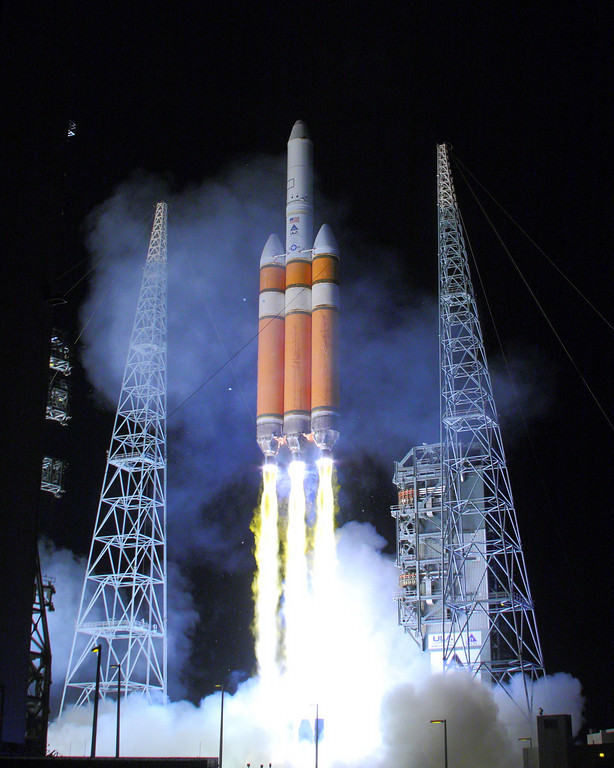
[/caption]
CAPE CANAVERAL — United Launch Alliance (ULA) successfully launched a Delta IV Heavy rocket from Cape Canaveral Air Force Station in Florida, sending a classified surveillance satellite to space. Liftoff occurred on Nov. 21 at 5:58 p.m. EDT. The enormous rocket thundered to life, and as almost to underscore the secretive nature of the mission, the fiery exhaust was only visible for a short while before disappearing into thick clouds. However, long after the rocket was out of view, it made its journey known through its roar. The vibration was so visceral that vehicles and windows of buildings in the immediate area began to rattle with the raw power that was unleashed.
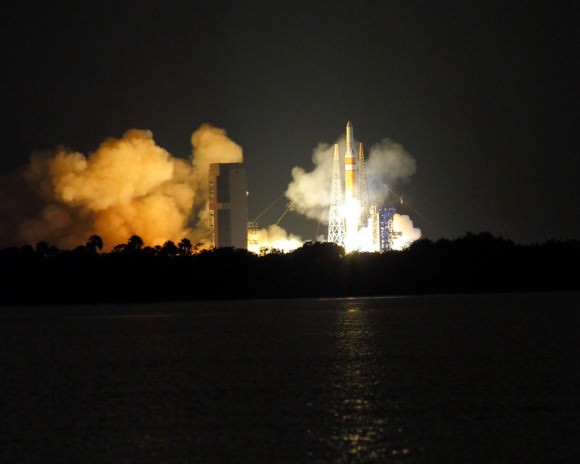
U.S. Air Force’ meteorologists predicted a 90 percent chance of acceptable weather for the launch, with only a tiny chance that winds could exceed the 20-knot limit. Winds were not an issue however and by all accounts the vehicle performed flawlessly.
The first launch attempt of the classified National Reconnaissance Office (NRO) satellite was scrubbed Friday during fueling of the Delta IV. Technicians determined that the reason for the scrub on Nov. 19 was a faulty sensor. The sensor gave incorrect temperature readings that were detected in the rocket’s three first-stage boosters. Technicians believed (correctly so) that they had resolved the issue.
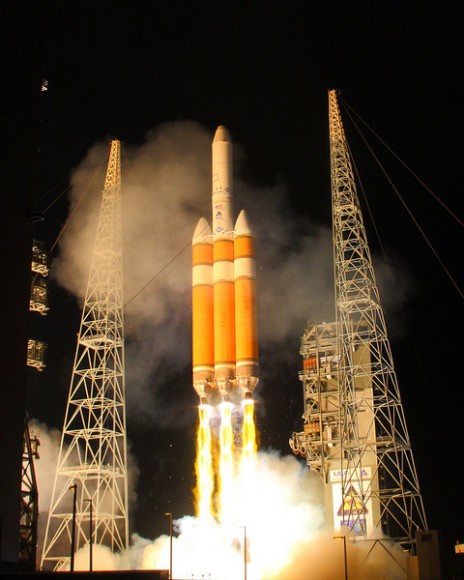
The launch team rolled back the 330-foot mobile service tower earlier in the day and pumped approximately 450,000 gallons of liquid hydrogen and liquid oxygen into the twin boosters.
Tonight’s launch marked the third operational flight of the massive Delta IV Heavy since its first demonstration flight back in December of 2004.
“This mission helps to ensure that vital NRO resources will continue to bolster our national defense,” said Brig. Gen. Ed Wilson, 45th Space Wing commander. “The spectacular evening launch showcases how the 45th assures access to the high frontier and supports global operations.”
Flawless Launch of STP-S26
[/caption]
While the U.S. Air Force unsuccessfully tried to get a Delta IV off the ground in Florida – things worked out far better for NASA at the Kodiak Launch Complex located in Kodiak, Alaska. Friday’s Minotaur 4 rocket launch successfully accomplished its mission of placing not one – but six satellites into orbit some 400 miles above the Earth.
The mission took off just before sunset from Launch Pad 1. After launch the $170 million flight turned southeast from its launch site going out over the Pacific Ocean. The launch took place under a clear sky with the moon lighting its way.
The payload for this flight was a rather mixed bag of NASA, military and university experiments. All six of the launch vehicle’s payloads were released right on time about 30 minutes after launch. The so-called ‘FASTSAT’ for Fast, Affordable, Science and Technology Satellite automatically switched itself on upon deployment. The project is a demonstration of ways to deploy experiments and other payloads cheaply and effectively to orbit.
Four of the satellites that were onboard the STP-S26 mission included the “ESPA-class:” STPSat-2, FalconSAT-5, FASTSAT-HSV01 and FASTRAC.
The FASTSAT program is NASA’s first microsatellite designed to provide multiple customers with access to orbit – at a lower cost. The main goal of the FASTSAT flight is to prove the viability of this capability to various government, academic and industry customers. The intent is to show that you do not have to invest millions of dollars into a single, large-scale satellite to conduct experiments on orbit.
The launch vehicle itself is also rather cheap as it is comprised of spare Peacekeeper missile tech. The STP-S26 mission was powered to orbit by a Minotaur IV launch vehicle, which was provided by the Rocket Systems Launch Program. The Minotaur IV is produced by Orbital Sciences Corporation.
One of the ‘firsts’ on this flight was the utilization of the Hydrazine Auxiliary Propulsion System (HAPS) to allow for dual-orbit capabilities. It is hoped, that in future flights this could be used to allow satellites to other orbits to give them far greater flexibility.
Another first employed on this mission was the first to use the Multi-Mission Satellite Operations Center Ground System Architecture. This center is capable of operating various satellites at the same time at a minimal cost. Indeed, the overriding theme of this launch would appear to be providing access to orbit – for less.
Launch of Delta IV Delayed; Shuttle Launch Options Weighed
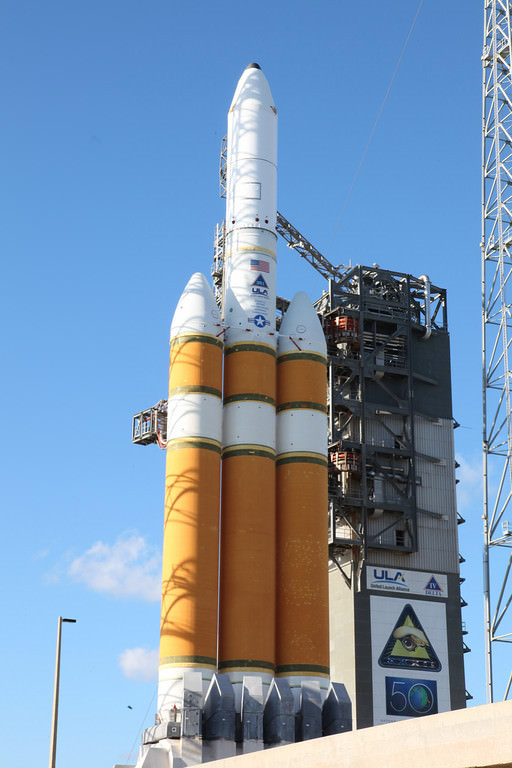
[/caption]
Those waiting for a launch from Florida’s Space Coast will have to wait a little more. The liftoff of a United Launch Alliance (ULA) Delta IV Heavy rocket has been pushed back yet again, and is now scheduled for Sunday, Nov. 21 at 5:58 p.m. EST (2258 GMT) from Space Launch Complex 37 (SLC 37) at Cape Canaveral Air Force Station. The rocket will carry a National Reconnaissance Office payload.
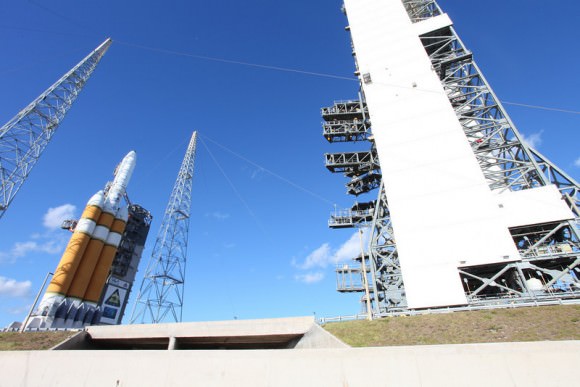
Delayed from the 18th, the next countdown started on Friday, but this too was not to be. As technicians started to fuel up the rocket’s twin strap on boosters encountered temperature anomalies. Engineers did not want to give an estimate as to when the rocket will be ready for launch – until they had a chance to unload the fuel and give the vehicle a closer look.
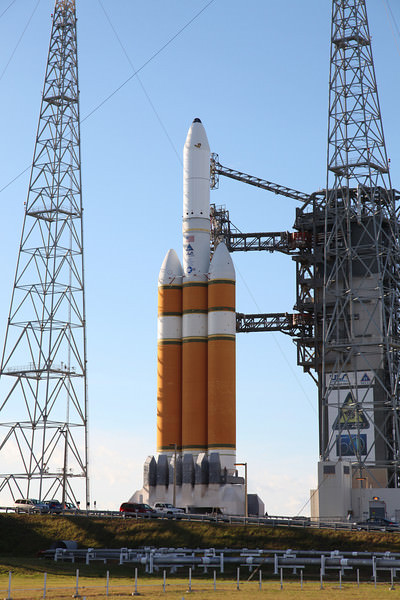
The payload for this mission is a classified spy satellite. In media advisories released by the 45th Space Wing it is described only as a ‘Galaxy 3.’ The 45th is stationed out of Patrick Air Force Base. The Delta IV Heavy is the largest rocket in the Delta 4 family, with three booster cores combined to form what is essentially a triple-bodied rocket.
As far as space shuttle Discovery, NASA managers are still keeping all their options open. Inspectors this week found a fourth crack in support beams on the external fuel tanks of the space shuttle. The work to repair the cracks is ongoing, but the teams will need to complete an engineering review and develop the necessary flight rationale in order to launch with a damaged tank. On Thursday, NASA announced that the flight will launch no earlier than Dec. 3, four days after the opening of a short end-of-year launch window.
The window closes Dec. 6. If NASA cannot get Discovery off the ground in the next available launch window, there is only one other planned launch at KSC/CCAFS for this year. This is the Dec. 7 launch of SpaceX’s Falcon-9 with its Dragon spacecraft payload. If this launch happens before the end of this year, it will mark the first demonstration flight of the $1.6 billion Commercial Orbital Transportation Services contract that the private space firm has with the space agency.
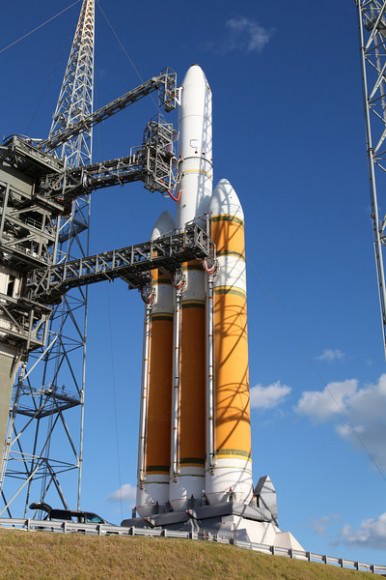
The Cutest Little Spaceship that Never Flew
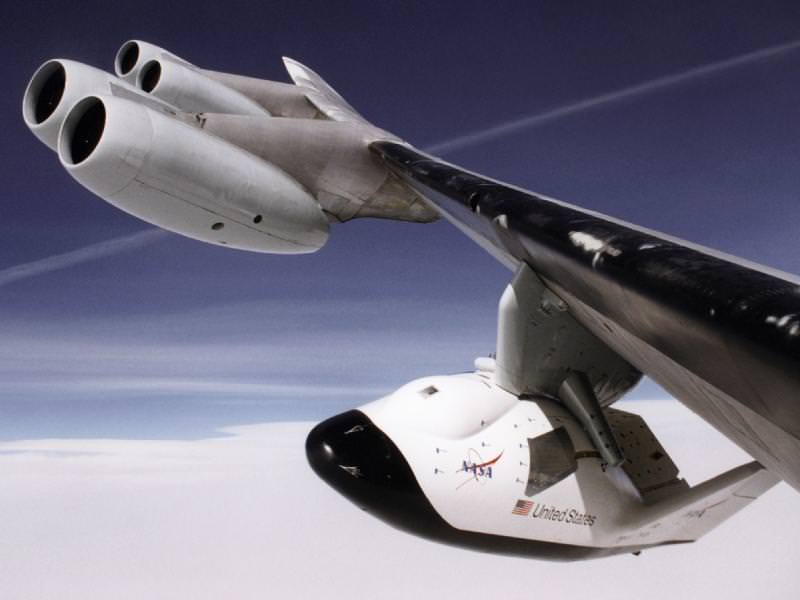
[/caption]
Of all the missions and spacecraft that NASA has shelved over the years, I found the X-38 Crew Return Vehicle (CRV) to personally be one of the most disappointing. While its cancellation resulted in no loss of science and never stranded any astronauts in space, my disappointment was from strictly an aesthetic point of view: this was the cutest little spacecraft I had ever seen. The X-38 was a prototype for a wingless lifting body reentry vehicle that was to be used as a crew return and/or rescue vehicle for the International Space Station, but it was canceled in 2002 due to budget cuts. I guess cuteness doesn’t get you far in the space biz.
The image above shows a test flight in 1999 where the the X-38 research vehicle was dropped from a B-52 airplane. Three different designs of the X-38 made flight tests, and the vehicle landed by using one of the biggest aerofoil parachutes ever made. The CRV was designed to fly automatically from orbit to landing using onboard navigation and flight control systems, but backup systems also would have allowed the crew to pick a landing site and steer the parafoil to a landing, if necessary. The X-38’s landed on skids, not wheels, reminiscent of the famed X-15 lifting body research aircraft.
The X-38 was developed at NASA’s Dryden Flight Research Center at Edwards Air Force Base in California, and atmospheric test vehicles were actually built by Scaled Composites – the very same company that later built SpaceShipOne and won the X PRIZE.
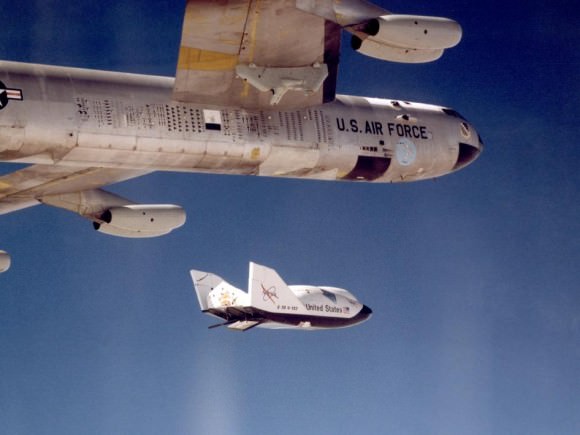
The X-38 looks like a mini-space shuttle, and would have fit into the payload bay of the full-size space shuttles.
X-38 weighed 10,660 kg and was 9.1 meters long. The battery system, lasting nine hours, was to be used for power and life support. If the crew from the ISS had to make an emergency return to Earth, it would only take two to three hours for the CRV to reach Earth.
One of the prototypes can now be seen at the Strategic Air and Space Museum in Ashland Nebraska, located just off Interstate 80, about 20 miles southeast of Omaha.
For more info about the X-38, see this NASA webpage.
Cassini Instruments Offline Until Nov. 24
[/caption]
NASA announced that the Cassini spacecraft in orbit around Saturn will have its suite of scientific cameras offline until at least Nov. 24. Cassini is currently in safe mode due to a malfunction in the spacecraft’s computer. This shut down all non-essential systems to prevent any further damage happening to the spacecraft. This means that all scientific efforts on the mission have been suspended until the problem can be resolved.
Although these seem like severe issues, mission managers are relatively sure that they will have no serious long-term effects on the overall mission. Cassini entered safe mode around 4 p.m. PDT (7 p.m. EDT) on Tuesday, Nov. 2. Managers want to review what took place onboard Cassini, correct what they can and ensure that this doesn’t happen again. Programmers have already ascertained that the likely cause of the problem was a faulty program code line that made its way back to Cassini.
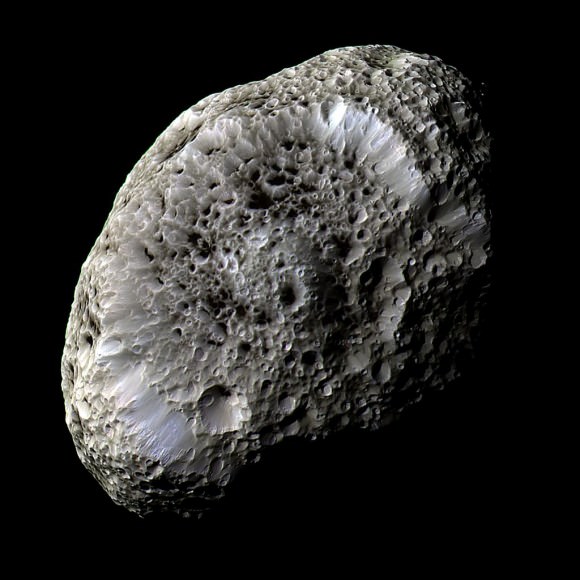
Ordinarily when faulty code is sent from Earth to Saturn, Cassini would reject any coding that is deemed ‘bad.’ However, this did not happen in this case, causing the problem. Controllers are not totally convinced that a solar fare didn’t corrupt the code on its way out to the gas giant.
“The spacecraft responded exactly as it should have, and I fully expect that we will get Cassini back up and running with no problems,” said Bob Mitchell, Cassini’s program manager at JPL. “Over the more than six years we have been at Saturn, this is only the second safing event. So considering the complexity of demands we have made on Cassini, the spacecraft has performed exceptionally well for us.”
Cassini launched from Cape Canaveral Air Force Station back in 1997 atop a Titan rocket. In the thirteen years since that time it has entered ‘safe’ mode a total of six times.
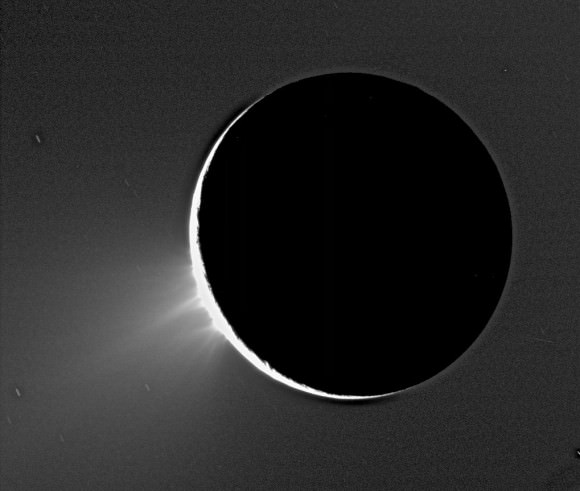
The largest loss for Cassini’s planners is this will cost them a flyby of Titan, one of Saturn’s moons and the only moon in the solar system with an appreciable atmosphere. All is not lost however, as there are still some 53 possible flybys of the moon currently scheduled. The mission is currently planned to last until 2017.
The Cassini-Huygens mission is a cooperative program managed between NASA, the European Space Agency (ESA) and the Italian Space Agency. JPL, a division of the California Institute of Technology (Caltech) manages the Cassini program for NASA’s Science Mission Directorate located in Washington, D.C.
Stubborn Shuttle Discovery Refuses to Launch on Final Mission
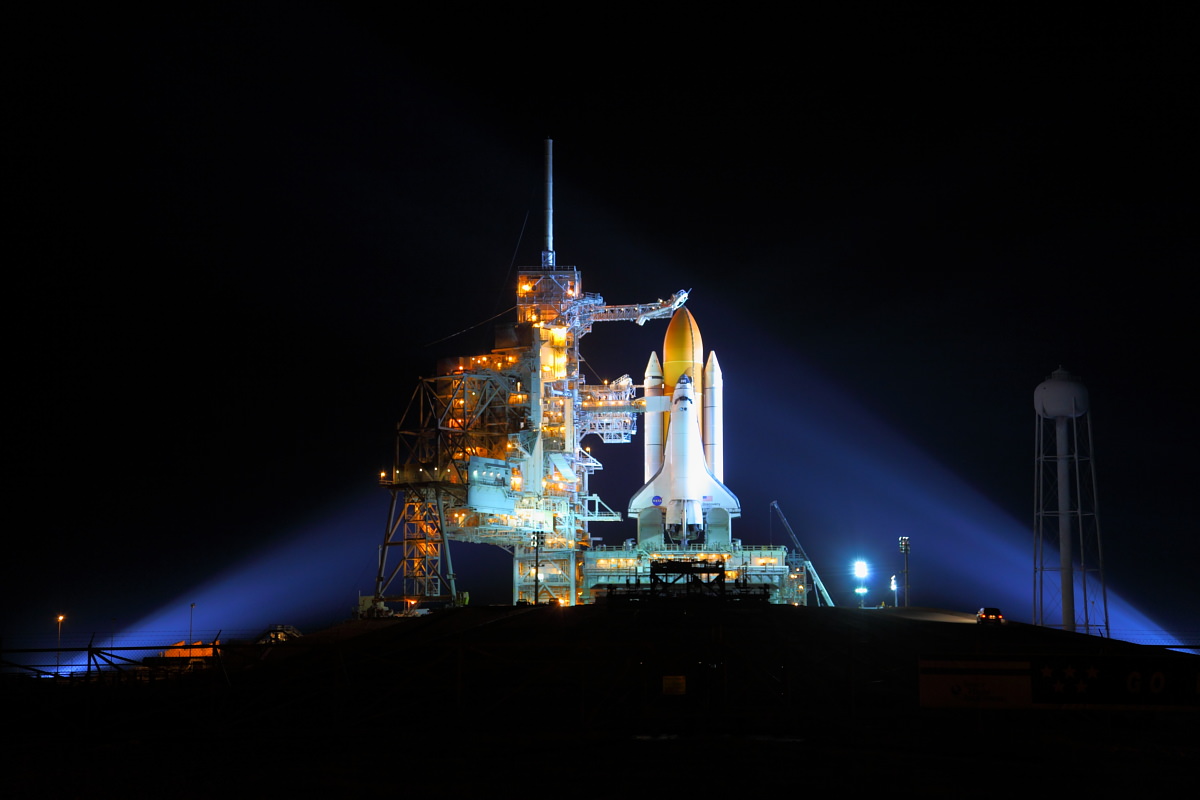
[/caption]
UPDATE: The launch has now been delayed until Nov. 30, as a crack was found in the foam on Discovery’s external tank after the fuel was offloaded this morning. Engineers posting on Twitter said the hydrogen leak this morning may have been a lucky break, as the crack had ice underneath and may have easily come off during launch. The crack was not seen previously.
It seems as through space shuttle Discovery keeps coming up with excuses to delay the launch of her final mission to space, and the launch pad facilities and weather are conspiring along with her. Originally scheduled to launch on Nov. 1, this latest delay comes from a hydrogen leak in a vent arm attached to the shuttle’s external tank. The work required will push back any further launch attempt until at least Monday, Nov. 8. That is the last day available in the current launch window, and if it doesn’t launch then the window closes until Nov. 30, due to unfavorable sun angles for when the shuttle would be docked to ISS.
This is not the first time a leak has occurred in the vent arm, but this time the leak was “substantial” said Launch Director Mike Leinbach.
“The signature of the leak is similar to what we’ve seen in the past when we’ve had leaks there, although the magnitude was higher this time and it occurred earlier in our tanking process,” he said.
Discovery’s 11-day mission to the International Space Station will bring a new storage module and the first humanoid robot, Robonaut 2, or R2 to the station. The Nov. 8 launch time is now scheduled for 12:53 Eastern STANDARD Time (17:53 UT).
Previous delays have stemmed from leaks in different systems, an electrical glitch and rainy, windy weather.
The launch scrubs have disappointed participants of the launch Tweet-up, where NASA allows Twitterers a chance to view a launch from Kennedy Space Center. While some of the participants are waiting out the delays, most have had to return home. This marks the first time there has been a launch delay when NASA has held a Tweet-up for a shuttle liftoff.
If you are needing to see a launch, try keeping an eye on a Delta II rocket launch from Vandenberg Air Force Base in California, with the COSMO Earth observing satellite. This rocket, too has had its share of delays, but is now slated for launch on Friday, Nov. 5 at 10:20 pm EDT (7:20 pm PDT).
Eyes On The Solar System

[/caption]
NASA’s beta version of Eyes on the Solar System, built by JPL and Caltech, offers a neat way of tracking a range of current space missions – for example, as Nancy Atkinson mentioned yesterday, you can follow EPOXI’s flyby of comet Hartley 2. Reminiscent of Celestia, this browser application gives you a 3D environment running in real time and is updated regularly with NASA spacecraft mission data.
To get it operating, you can just click to the NASA link where you are prompted to install a Unity Web Player plug-in. This is fast and straight forward, from my experience. I did strike a problem with a certain small and squishy 64bit system that starts with X (where the menu text didn’t display correctly), but it ran fine on other systems. It is a beta version after all – and I feel obliged to note you should load at your own risk, yada, yada.
Anyhow, if you choose to proceed, you can then move around the solar system with left mouse click-hold and scroll wheel actions – or there’s the usual keyboard alternatives, or even on-screen controls. In default mode, a number of celestial bodies are shown and labeled, as are several spacecraft, which you can zoom over to by clicking on them. You can add more objects from the Visual Controls menu. Default settings have comets hidden, so you’ll need to add them to do an EPOXI-Hartley 2 encounter simulation.
There are some online tutorials you can take from the opening screen – which are short and useful – to get a quick run-through of the options available.
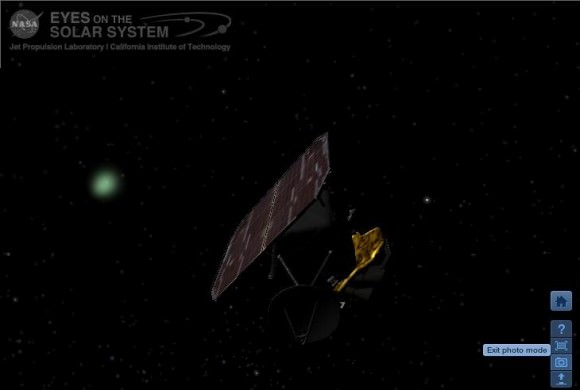
Like Celestia, you can speed up, slow down and move back and forth through time. This means you can replay EPOXI’s closest approach to Hartley 2 – or go right back to 1997 and zoom out to watch Cassini leave Earth and travel to Saturn via Venus and Earth flybys until it reaches Saturn in 2004 – all of which you can enjoy in about 5 seconds after cranking up the passage of time. You can also pick an ‘over the shoulder’ view to ride with Cassini through the F and G rings on its first approach to Saturn.
Unlike Celestia, because Eyes is mainly about spacecraft missions, its environment only covers the period from 1950 to 2050 and (curses) I couldn’t find any options to add in fictional spacecraft.
For a bit of edu-tainment you can access right-click controls which allow you to measure distances between objects – and monitor how those distances change as the objects move over time. For a bit of fun, you can also compare spacecraft to scale objects – with a choice between scientist, Porsche and football stadium. As one of the brief tutorials will explain, Voyager 1 is about the size of a Porsche.

